There was no more welcomed sound to a wounded soldier in Vietnam than the whop-whop-whop of the “dustoff Huey” coming to get them out of hell. Anyone that has ever flown in a Dustoff Huey will never forget that heavenly sound.
Without a doubt the Dustoff Medics witnessed more of the brutality of war than anyone. It took men with incredible courage to face the quantity of wounds and injuries they faced many times in a day. Shot at, sniped at, under mortar and heavy arms fire, they ran through mine fields to get to the wounded. Some of the most heroic men in the war.
The Vietnam War posed a unique logistical challenge to the military leaders. The war was fought in triple canopy jungle terrain and bad weather, there were constant guerilla attacks and the front line changed from day to day. Often vehicles traveling on the roads were subject to landmines, ambushes and poor road conditions, and some of the areas where heavy fighting took place were so remote there were no roads. All of these factors posed one major problem for the military. How do they transport the wounded safely and in a timely manner to the aid stations and hospitals for proper medical care? The Army’s medical branch decided to revisit an idea that came about in the Korean War – a helicopter ambulance corps. An idea that was implemented with so much success in Vietnam that in most cases a wounded soldier would be in a hospital receiving medical care within 35 minutes of being wounded.
Print by Williams S. Phillips
In April of 1962, the 57th Medical Detachment (Helicopter Ambulance) arrived in Vietnam with five UH-1 “Huey” helicopters. They took the call sign Dustoff. Over time the number of medevac detachments grew in Vietnam until the entire country had coverage and Dustoff became the universal call sign for all medevac missions.
A Dustoff crew consisted of four people: two pilots, a medic and a crew chief. Usually, one pilot would fly the helicopter while the other acted as the aircraft commander. The commander would navigate, monitor all of the radio transmissions, talk to the unit requesting the medevac and would take over flying if the pilot were injured. The medic kept the helicopter stocked with the necessary medical supplies and the crew chief would maintain the helicopter in top working condition. They would both load the patients onto the helicopter and the medic would administer any necessary medical treatment on the way to the hospital, often with the help of the crew chief. The medic and crew chief would stay with a particular helicopter while the pilots were interchangeable between helicopters. These crews saved many lives and were universally respected by all of the soldiers in the war.
Print by Joe Kline of 498th Air Ambulance Platoon
Many transport helicopters and crews also landed under heavy fire to rescue or Medivac wounded soldiers. Unlike Medivac choppers, slicks were armed aircraft and could return fire during the flight, but they weren’t outfitted with medical supplies. Many of these pilots risked the lives of their crew and flew through an onslaught of fire to rescue wounded soldiers and getting them to hospitals. Some of these birds were so badly damaged they barely lifted off with survivors – others, not so lucky, crashed into the LZ or en-route to the hospital. These crews were relentless, trading in their battered birds for new Huey’s then returning to collect more of the wounded. Several chopper pilots were awarded the MOH for their actions during these type of evacuations, two come to mind: Bruce Crandall and Ed “Too Tall” Freeman for their actions during the Battle of the Ia Drang Valley.
Brigadier General Edwin H. Simmons Collection – The Face of War– Corporal Larry R. Miklos, center, and an unidentified corpsman look in horror as an enemy machine gun fires at the medevac helicopter in which he is riding.
What’s important to understand is that the Medivac pilots and crews were a special breed. Their Huey’s were unarmed and were outfitted as a flying ambulance. Normally, when Medivac left on a mission, two cobra helicopters accompanied the Huey and provided supporting fire in the event of a hot LZ. On occasion, these pilots refused to wait around for their escorts and left by themselves to rescue wounded soldiers. Of all the chopper pilots permanently assigned to Medivac duty, only two received the MOH during the Vietnam War. This is their story:
Michael Novosel
For conspicuous gallantry and intrepidity in action at the risk of his life above and beyond the call of duty.
Fort Rucker Remembrances Retired Chief Warrant Officer Honored Veteran Dies 3 April 2006
CWO Novosel, 82d Medical Detachment, distinguished himself while serving as commander of a medical evacuation helicopter. He unhesitatingly maneuvered his helicopter into a heavily fortified and defended enemy training area where a group of wounded Vietnamese soldiers were pinned down by a large enemy force. Flying without gunship or other cover and exposed to intense machinegun fire, CWO Novosel was able to locate and rescue a wounded soldier. Since all communications with the beleaguered troops had been lost, he repeatedly circled the battle area, flying at low level under continuous heavy fire, to attract the attention of the scattered friendly troops. This display of courage visibly raised their morale, as they recognized this as a signal to assemble for evacuation.
On 6 occasions he and his crew were forced out of the battle area by the intense enemy fire, only to circle and return from another direction to land and extract additional troops. Near the end of the mission, a wounded soldier was spotted close to an enemy bunker. Fully realizing that he would attract a hail of enemy fire, CWO Novosel nevertheless attempted the extraction by hovering the helicopter backward. As the man was pulled on aboard, enemy automatic weapons opened fire at close range, damaged the aircraft and wounded CWO Novosel. He momentarily lost control of the aircraft, but quickly recovered and departed under the withering enemy fire.
Courtesy of Robert Lafoon
In all, 15 extremely hazardous extractions were performed in order to remove wounded personnel. As a direct result of his selfless conduct, the lives of 29 soldiers were saved. The extraordinary heroism displayed by CWO Novosel was an inspiration to his comrades in arms and reflect great credit on him, his unit, and the U.S. Army.
Twenty-six years before receiving the Medal of Honor for his actions in Vietnam, Michael J. Novosel flew his first combat mission as a U.S. Army Air Corps B-29 pilot during World War II.
When the Japanese surrendered aboard the Battle ship Missouri, he also piloted one of nearly 500 B-29s that flew over the ceremony.
After the war, he commanded the 99th Bombardment Squadron until its deactivation in 1947, after which he became a B-29 test pilot at Eglin AFB, Florida.
Novosel left active duty in 1949 and went into the Air Force Reserve.
When hostilities broke out in Vietnam, Lieutenant Colonel Novosel, then a pilot for Southern Airways, wanted to return to combat flying. However, due to an overage of lieutenant colonels, the Air Force was unable to accept him.
Determined to do his part in Southeast Asia, he joined the Army as a Warrant Officer and began flying helicopters. On 2 October 1969, during his second Vietnam tour as a “Dust-Off” pilot, Chief Warrant Officer Novosel was flying for the 82d Medical Detachment near Cambodia’s enemy-dominated “Parrot’s Beak” region when he received word that wounded South Vietnamese soldiers were pinned down near an enemy training area.
CWO Novosel retired from the military in 1984 after 44 years. He was the author of “Dustoff: The Memoir of an Army Aviator,” which detailed his military service.
*****
Major Patrick Henry Brady
Graduated in 1959 with a degree in psychology and was commissioned a Second Lieutenant in the Medical Service Corps.
After an initial assignment to Berlin he attended the Army Intelligence School. A background check uncovered some un-reported youthful incarcerations and Brady was expelled.
Fortunately a slot for Brady was found in the Army’s basic helicopter school. Despite nearly washing out, Captain Brady earned his wings in December 1963.
In January 1964 Brady volunteered for Vietnam and was assigned to the 57th Medical Detachment – Helicopter Ambulance, led by Major Charles Kelly. The unit’s call-sign was “Dust Off,” a cry for help and was the most famous of all Vietnam call-signs.
Major Kelly was in a battle to save Dust Off from ill advised Army leadership who wanted to use Kelly’s helicopters for hauling “ash and trash,” pinning portable red crosses onto helicopters only when needed for patient evacuation.
Courtesy of James Evans – Medevac helicopter in for landing at 91st Evacuation Hospital Emergency Room.
Kelly was outraged and charged his pilots to prove their worth by evacuating patients under conditions never before attempted; at night, in weather and during the battle. Nothing was to come between the crew and the patient.
Kelly became a legend and Brady began to develop survival flying techniques for patient rescue in weather and under fire.
On July 1, 1964, on a rescue mission, Major Kelly came under fire. Friendlies screamed to get out. Kelly’s last words, “When I have your wounded,” were uttered as he took a fatal round.
Courtesy of James Evans
Despite efforts to change Dust Off, Kelly’s dying words became the standard and nothing more was heard about portable red crosses. Thanks to Kelly and his men, Dust Off would rescue some one million souls in Vietnam, setting unmatched lifesaving records.
Brady left Vietnam and was assigned to Fort Benning, Georgia where he continued to fly medevacs in the antiquated H-19. In late summer 1967 Brady trained and outfitted the 54th Medical Detachment for deployment to Vietnam in August.
The 54th was based at Chu Lai. The war had intensified since Brady’s first tour. Dust Off had gone from supporting 16,000 troops to half a million. Night, weather and terrain were as deadly as the communists.
Brady furthered his flying skills and the 54th became specialists in combat pickups at night, in weather, and under fire, using techniques never before used in combat.
Brady in 1989
On his second tour of duty in Vietnam, 1967 to 68, Brady, now a Major, was second in command of the 54th Medical Detachment. It was during this second tour in Vietnam that Brady was awarded the Medal of Honor.
Courtesy Douglas Pike
Brady flew over 2,000 combat missions and evacuated more than 5000 wounded during his two tours of duty in South Vietnam. He never lost a crewman or a patient on any helicopter he piloted.
CITATION:
For conspicuous gallantry and intrepidity in action at the risk of his life above and beyond the call of duty, Maj. BRADY distinguished himself while serving in the Republic of Vietnam commanding a UH-1H ambulance helicopter, volunteered to rescue wounded men from a site in enemy held territory which was reported to be heavily defended and to be blanketed by fog. To reach the site he descended through heavy fog and smoke and hovered slowly along a valley trail, turning his ship sideward to blow away the fog with the backwash from his rotor blades. Despite the unchallenged, close-range enemy fire, he found the dangerously small site, where he successfully landed and evacuated 2 badly wounded South Vietnamese soldiers. He was then called to another area completely covered by dense fog where American casualties lay only 50 meters from the enemy. Two aircraft had previously been shot down and others had made unsuccessful attempts to reach this site earlier in the day. With unmatched skill and extraordinary courage, Maj. Brady made 4 flights to this embattled landing zone and successfully rescued all the wounded. On his third mission of the day Maj. Brady once again landed at a site surrounded by the enemy. The friendly ground force, pinned down by enemy fire, had been unable to reach and secure the landing zone. Although his aircraft had been badly damaged and his controls partially shot away during his initial entry into this area, he returned minutes later and rescued the remaining injured. Shortly thereafter, obtaining a replacement aircraft, Maj. Brady was requested to land in an enemy minefield where a platoon of American soldiers was trapped. A mine detonated near his helicopter, wounding 2 crew members and damaging his ship. In spite of this, he managed to fly 6 severely injured patients to medical aid. Throughout that day Maj. Brady utilized 3 helicopters to evacuate a total of 51 seriously wounded men, many of whom would have perished without prompt medical treatment. Maj. Brady’s bravery was in the highest traditions of the military service and reflects great credit upon himself and the U.S. Army.
2012 Dead Men Flying is the story of Charles Kelly, the father of Dust Off, who gave his life to save Dust Off – the greatest life-saver ever. His dying words – When I have your wounded – set the standard for combat medicine to this day. It is also the story of the author, Medal of Honor recipient General Patrick Brady, who learned from Charles Kelly and struggled to meet his standard. Brady led the 54th Medical Detachment as it rescued over 21,000 wounded – enemy and friendly – in 10 months, while sustaining 26 Purple Hearts. Finally, Dead Men Flying is the story of salvation in the midst of horror, courage in the face of adversity, and the miracle of faith in the heat of combat. A riveting tale from America’s most decorated living soldier, this is a book that no American can afford to ignore.
To read more about Dustoff and see a collection of Medevac pictures – please refer to my previous article on this blog site: https://cherrieswriter.wordpress.com/2016/02/23/dead-men-flying-heroic-as-hell-the-dustoff-pilots-of-the-vietnam-war-image-heavy/
Information for this article was obtained from the Aviation Hall of Fame, Texas Tech University – The Vietnam Center and Archive, Wikipedia, YouTube and Amazon.com.
Thank you for taking the time to read this. Should you have a question or comment about this article, then scroll down to the comment section below to leave your response.
If you want to learn more about the Vietnam War and its Warriors, then subscribe to this blog and get notified by email or your feed reader every time a new story, picture, video or changes occur on this website – the button is located at the top right of this page.
I’ve also created a poll to help identify my website audience – before leaving, can you please click HERE and choose the one item best describing you. Thank you in advance!


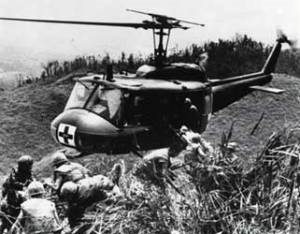
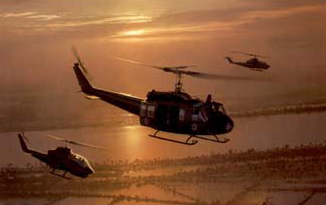

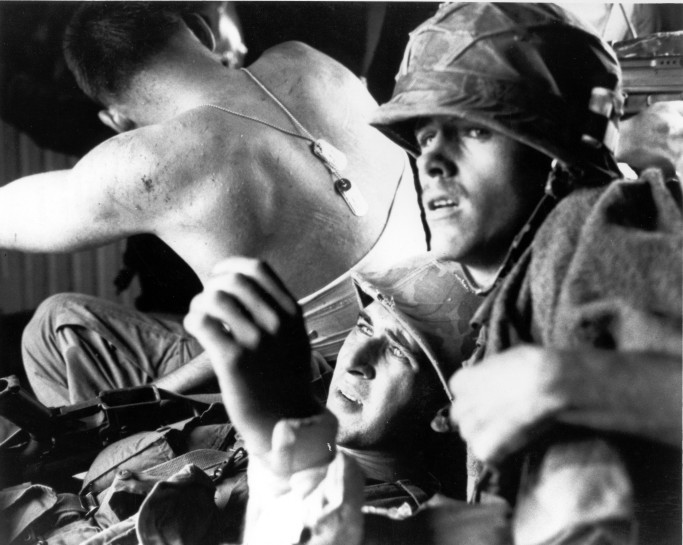
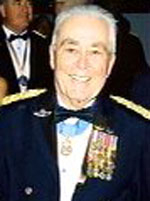
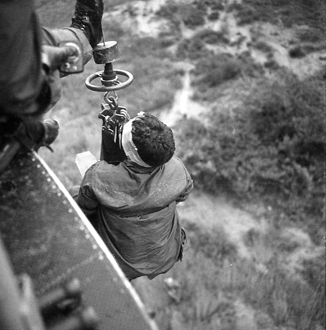

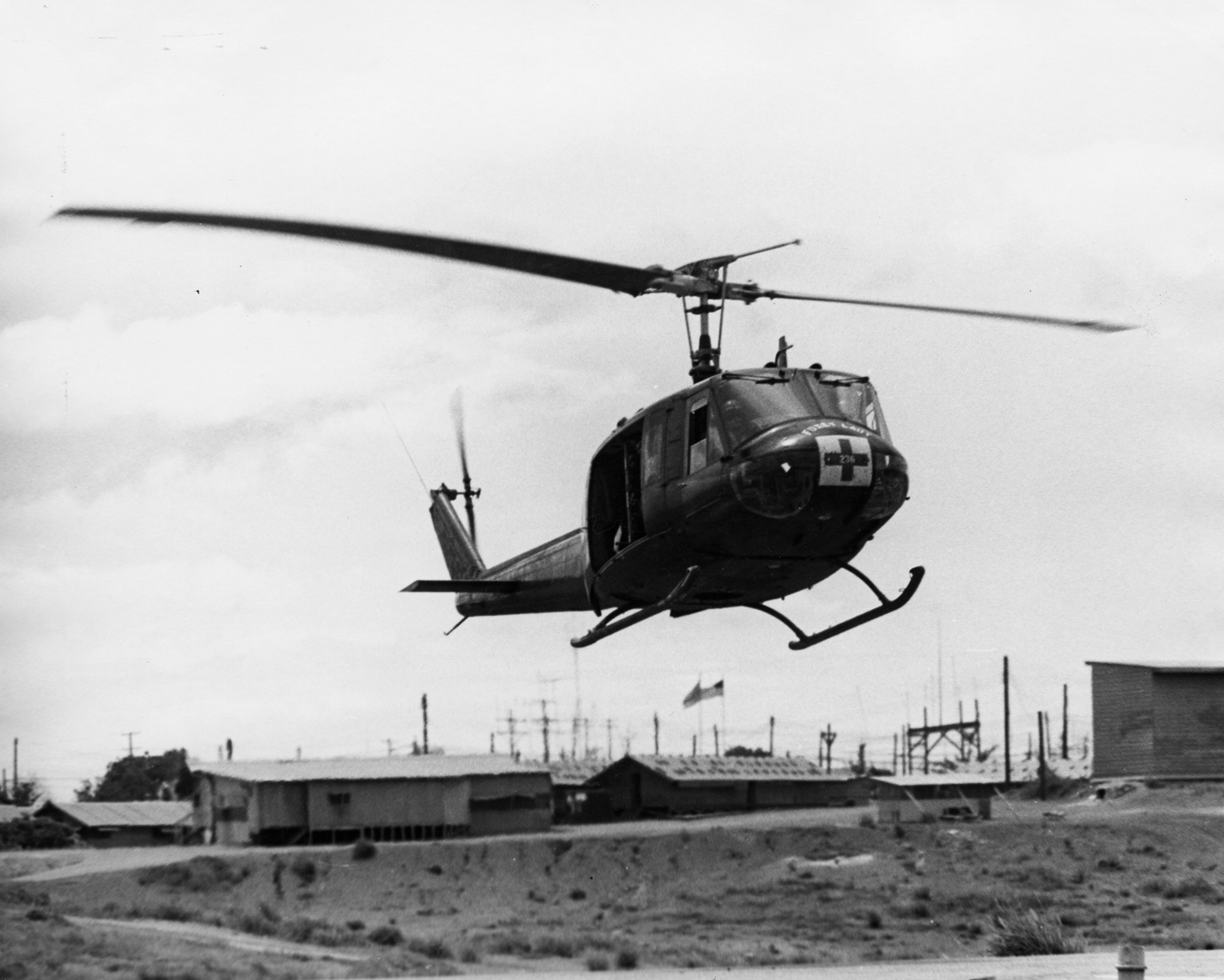
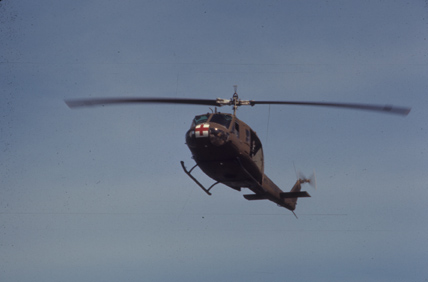



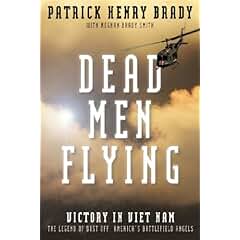

That’s what we did, I would add we also picked up the wounded civilians whose bus was often land mind and of course they were very crowded. Also too, supported the the Koreans, Ausies and we flew Head and chest wounds, (life threatening) from Quang Tri area direct from battlefield to the Hospital Ship(s) offshore for immediate surgery.
LikeLiked by 1 person
I flew with Phu Bia and DMZ Dustoff in 68-69-70 providing rescue helicopter evacuation to all wounded soldiers. Marines, Ausses, and even the VC/NVA.
LikeLiked by 1 person
I thought it was 15 minutes average dust off to landing but either way I remember using machetes to cut lz for them or blowing with det cord to Lear trees
LikeLiked by 1 person
Flew Dustoff with Boththe 571st and 237th in 68-69-70. Our greatest loss was not getting to an LZ in time.
LikeLiked by 1 person
crewchief in 1st photo is Lou Ortega.It has been verified.
LikeLiked by 1 person
The first photo shown is the 237th DMZ Dustoff 1969. The crewchief hanging out the side is me. This photo was taken as we removed the wounded off Dong Ha mountain. Supporting the5th. Mech ?
LikeLiked by 1 person
the crewchief in the rear is luis ortega
LikeLiked by 1 person
As I read these articles my hats off to the pilots for the sacrifice to duty. I heard them coming from afar I knew we were safe. Pick up the wounded and dead drop more ammo the did this only thinking of there brothers in the field. Thanks to all who flew God bless you welcome home.
LikeLiked by 1 person
As a Vietnam Dustoff pilot it’s always a pleasure to read articles supporting our work in Vietnam. However, a couple of clarifying corrections should be added to this article. There was a difference between Dustoff and Medevac (spelled with two ‘e’s and no ‘i’. Medevac belonged solely to the 15th Medical Detachment in direct support of the 1st Cav Division. Their distinction being a crew of five. Two pilots, a medic, a crew chief and a gunner since the 15th Med was the only unit in Vietnam that flew with twin M-60’s on their Huey’s marked with red crosses.
Another item referred to the pilots as the ‘Peter’ pilot or co-pilot doing all the flying while the AC (aircraft commander) managed navigation and the radios. This is innocorrect as in both units I served with in Vietnam the two pilots shared those duties though the AC was always in command even if the peter pilot outranked him. On the ground it was the other way around. In every LZ one pilot had the controls while the other pilot was light on his controls in the event the other guy was shot the one who was light could quickly recover the Huey.
LikeLiked by 1 person
I was the Crewchief in the opening pictures. My unit was the 237th. DMZ Dust Off. This was in 1969 and was featured in the Stars and Stripes newspaper in 1969.
LikeLiked by 1 person
I was a Dustoff medic, but I’m glad to see your mention of the slick crews and others that also rushed in, under fire, to rescue the wounded.
LikeLiked by 1 person
Thanks for sharing. As always my Heart cries.
LikeLike
the article is great. like he said many transport huey`s also carried the wounded.
LikeLiked by 1 person